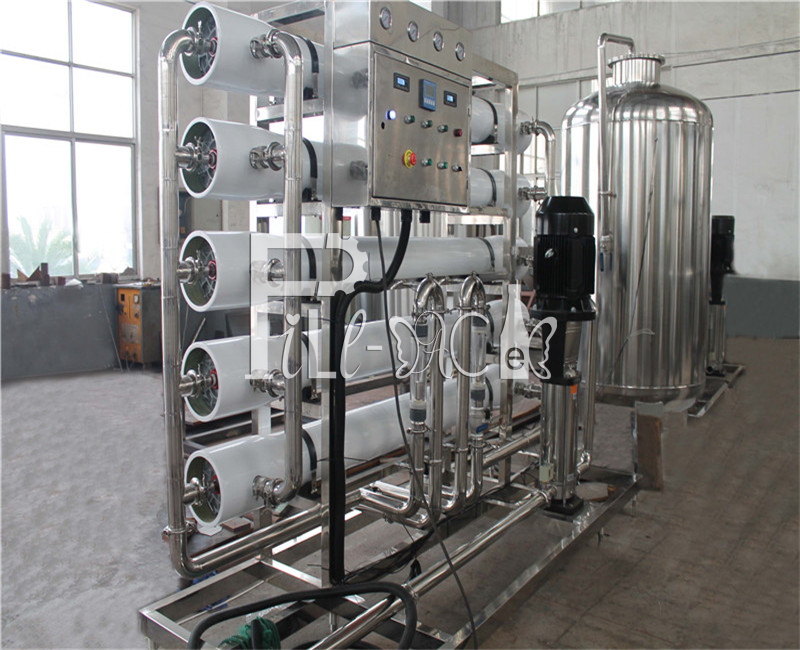- Tel.: +86 512 5864 3048
- E-mail: admin@fillpackmachine.com
Reverse Osmosis Equipment Fouling Cause and Cleaning Plan (Part 2)
※Performance when various pollutants scale
(1) Carbonate scale
Performance after scaling: standard permeate flow rate drops, or desalination rate drops.
Reason: Increased concentration polarization on the membrane surface
(2) Iron/manganese
Performance after contamination: The increase in the standard pressure difference (mainly occurring at the membrane element at the front end of the device) may also cause a decrease in water permeability. Usually manganese and iron will coexist.
(3) Sulfate scale
If deposition occurs, the membrane element at the rear of the system with the highest salt concentration is affected first, showing a significant increase in the second-stage pressure difference. A special cleaning agent is required.
(4) Silicon
Particulate silicon: the water flow channel of the fouling membrane element, resulting in an increase in the system pressure difference. The use of 0.4% dichloramine is effective for dissolving heavily contaminated silica scale.
Glue silicon: similar to granular silicon.
Dissolved silicon: formation of silicate precipitation, should be cleaned with dichloramine.
(5) Suspended matter/organic matter
Fouling performance: Permeability decreases, and the pressure differential increases significantly. If the feed water SDI is greater than 4 or the turbidity is greater than 1, the possibility of organic contamination is greater.
(6) Microorganism
Fouling performance: standard pressure difference increases or standard water permeability decreases. It can be cleaned by adding alkali with non-oxidizing bactericide.
(7) Iron bacteria
Fouling performance: the standard pressure difference increases. It can be cleaned by adding sodium EDTA and alkali.

RO equipment
4. Judgment and selection of cleaning timing of RO water purification system
When the following occurs-the reverse osmosis membrane system should be cleaned
■ The water production of equipment after standardization is reduced by 10~15%;
■ The operating pressure of the standardized membrane system is increased by 15%;
■ The salt transmission rate of the standardized membrane system is increased by 10~15% compared with the initial normal value;
■ Operating pressure difference increased by 15% compared with the initial operation
The performance parameters of RO equipment are related to changes in many factors such as pressure, temperature, pH value, system water recovery rate and salt concentration of raw water. Therefore, it is very important to base on the normal technical parameters (product water flow rate, pressure, pressure difference and system desalination rate) obtained during the initial test and compare with the current system data after standardization. In addition, the choice of cleaning time also differs depending on the raw water quality conditions and environmental characteristics of the area where the reverse osmosis equipment is used. Therefore, it is necessary to implement appropriate management measures according to the conditions of the equipment site. But in any case, for any well-designed and well-managed reverse osmosis system, the shortest cycle of chemical cleaning should be guaranteed to run continuously for more than 3 months, and the running time is generally about 6-12 months, otherwise It must be considered to improve the pretreatment equipment of the original system or its operation management.
Copyright © ZhangJiaGang City FILL-PACK Machinery CO., LTD. All Rights Reserved
Technical Support: 